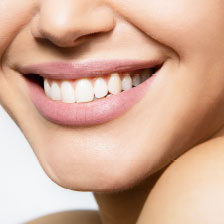 Crooked teeth can adversely affect the appearance of your smile, but their effect is not just cosmetic. They can leave certain parts of your teeth less accessible when you brush, which makes those hard-to-reach areas more susceptible to developing cavities. If your teeth are misaligned, but you are apprehensive about receiving braces, you could benefit from Invisalign aligners. Invisalign can straighten teeth without visually obtrusive bracket-and-wire braces. In addition to improving your appearance, aligners can eliminate the awkward overlaps between teeth that face an increased risk for cavities.
Crooked teeth can adversely affect the appearance of your smile, but their effect is not just cosmetic. They can leave certain parts of your teeth less accessible when you brush, which makes those hard-to-reach areas more susceptible to developing cavities. If your teeth are misaligned, but you are apprehensive about receiving braces, you could benefit from Invisalign aligners. Invisalign can straighten teeth without visually obtrusive bracket-and-wire braces. In addition to improving your appearance, aligners can eliminate the awkward overlaps between teeth that face an increased risk for cavities.
How Crooked Teeth Are At More Risk For Cavities
If your teeth are crooked, it can leave certain parts covered so that they are harder to adequately clean when you brush. Bacteria in these spaces can continue to attack the enamel of your teeth, and eventually cause a cavity. If you schedule regular dental visits, a cavity can be detected and treated with a filling. However, if you postpone visiting your dentist, that cavity can reach your pulp and cause an infection in the living tissue that sustains your tooth. If this occurs, you will need a root canal to have the infection treated.
How Aligners Work
Invisalign aligners correct crooked teeth with a series of dental trays, which make modest, progressive adjustments to their position. The aligners are clear, so that they are hard for people to notice. They can be removed when you need to eat, or when you clean your teeth. Invisalign aligners can often complete your realignment in 12 to 18 months.
Porcelain Veneers
If you have a milder case of misalignment, you could use porcelain veneers to remedy their appearance. Veneers can be used to cover teeth that are misaligned, damaged, discolored, or otherwise visually flawed.







